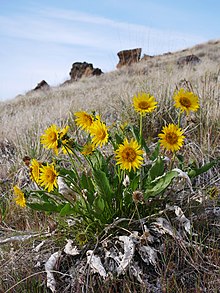야두반시 라즈푸트
Yaduvanshi Rajput야두반시 라즈푸츠는 다양한 라즈푸츠 씨족을 설명하는 데 사용되는 용어입니다.그들 중 눈에 띄는 것은 바티스, 제이드야스, 자둔, 삼마스, 추다사마스 등입니다.[1]
동일한 혈통 때문에, 많은 역사학자들은 야두반시 라즈푸트족이 야두반시 아히르족에서 진화했다고 믿고 있습니다.[2][3][4][5]일부 학자들은 추다사마스, 제이드야스, 데바기리 야다바스가 같은 지역을 지배하던 아비라 왕조의 후손이라고 주장합니다.[6]전설적인 음력 왕조의 추다사마와 야다바스를 연관 짓는 몇몇 비문들이 있습니다.[7]이들에 따르면, 추다사마스는 지역 통치자로부터 반탈리 공국을 획득하고 그 후 이미 요새화된 도시 주나가드를 점령한 삼마계의 한 분파였습니다.후대의 비문과 문헌 만달리카-니파-차리타는 힌두 신인 크리슈나의 야다바족과 관련이 있습니다.[8]
사미라 셰이크는 추다사마가 원래 목회자였다고 말합니다.그녀는 제이드야스, 추다사마스, 바티스, 삼마스는 크리슈나의 후손인 아스파트, 가즈파트, 나르파트, 부파트의 네 형제에게서 비롯되었다고 덧붙였습니다.이 신화적인 족보는 형제들이 함께 이집트를 정복했다고 주장합니다.이슬람 정복 이후 아스팟은 이슬람교로 개종하여 삼마 왕조를 세웠고, 그 후 가즈니를 정복했고, 부팟은 바트너를 세웠고, 나르팟은 신드에 나가르-사모이를 세운 후 초대 추다사마 통치자 찬드라쿠다의 조상이 되었습니다.[9][10]Tod, Burgess, Desai, Rayjada를 포함한 과거의 인도학자들에 의해 약간 다른 세부사항을 가진 비슷한 주장이 기록되었습니다.게다가, 엘리엇과 다우슨이 그들의 인도 역사에서 사용한 투파탈 키람은 이 신화의 이슬람화된 버전을 기록하고 있습니다.[9]
참고문헌
- ^ Sheikh, Samira (1 May 2008). "Alliance, Genealogy and Political Power: The Cūdāsamās of Junagadh and the Sultans of Gujarat". The Medieval History Journal. 11 (1): 29–61. doi:10.1177/097194580701100102. ISSN 0971-9458.
- ^ Soni, Lok Nath (2000). The Cattle and the Stick: An Ethnographic Profile of the Raut of Chhattisgarh. Anthropological Survey of India, Government of India, Ministry of Tourism and Culture, Department of Culture. ISBN 978-81-85579-57-3.
Bhattacharya (1995: 237) has written," The Rajput generally repudiate all connections with the Ahir, though it seems very probable that the Yadubansi Kshatriyas were originally Ahirs".
- ^ India, United Service Institution of (1911). Journal of the United Service Institution of India.
Mr. Bhattacharya advances the proposition that Jadubans Rajputs are descended from Ahirs.
- ^ Bhattacharya, Jogendra Nath (1896). Hindu Castes and Sects: An Exposition of the Origin of the Hindu Caste System and the Bearing of the Sects Towards Each Other and Towards Other Religious Systems. Thacker, Spink.
The Rajputs generally repudiate all connection with the Ahirs, though it seems very probable that the Yadu Bansi Ksatriyas were originally Ahirs.
- ^ commission, Great Britain Indian statutory (1930). Report of the Indian Statutory Commission ... H. M. Stationery Office.
Mr. Bhattacharya, a distinguished historian , writes in his book the "Indian Castes and Tribes" : "It seens very probable that the Yadubansi Rajputs are derived from the Yadubansi Ahirs. The Narayani Army which the Krishna organised and which made him so powerful that his friendship was eagerly sought by the greatest kings of his time , is described in the Mahabharata as being all of the Ahir caste .
- ^ Munshi, Kanaiyalal Maneklal (1943). The Glory that was Gūrjaradeśa: The pre-historic west coast. Bharatiya Vidya Bhavan.
Some scholars, however, regard the Cūḍāsamās, Jāḍejās and Devagiri Yadavas as Ābhīras.
- ^ Kapadia, Aparna (16 May 2018). Gujarat: The Long Fifteenth Century and the Making of a Region. Cambridge University Press. pp. 12–13. ISBN 978-1-107-15331-8.
- ^ Kapadia, Aparna (16 May 2018). Gujarat: The Long Fifteenth Century and the Making of a Region. Cambridge University Press. pp. 80–81. ISBN 978-1-107-15331-8.
- ^ a b Kapadia, Aparna (16 May 2018). Gujarat: The Long Fifteenth Century and the Making of a Region. Cambridge University Press. p. 13. ISBN 978-1-107-15331-8. 인에
- ^ Kothiyal, Tanuja (2016). Nomadic Narratives: A History of Mobility and Identity in the Great Indian Desert. Cambridge University Press. p. 56. ISBN 978-1-107-08031-7.


